Bas-reliefs are what remains as a memory for posterity. The works of the masters of the Ancient World still stagger the imagination: the temples of Ancient Rome and Greece, patterns on mosques in Central Asia, incredible images in Spain - all this is really wonderful. And it is not surprising that this is how many people want to decorate their interior. A bas-relief made on the wall with your own hands is also an exciting activity, the result of which you can be proud of. We will talk about how to make modeling in this material.
Read in the article
- 1 What can a bas-relief in a modern interior
- 2 Where to use a bas-relief in the interior
- 3 Materials and tools for creating a convex image
- 4 The most popular motifs for bas-reliefs
- 5 How to make a bas-relief on the wall for a novice master: the main steps
- 5.1 Preparing to work on the bas-relief
- 5.2 How to work with a sketch
- 5.3 Frame for three-dimensional drawing
- 5.4 How to form a relief on the wall
- 6 Bas-relief illumination: basic rules
What can a bas-relief in a modern interior
Both artists and architects are familiar with the concept of "bas-relief". At its core, this is a sculpture, but not full-sized, but as a convex drawing, a symbiosis of drawing and sculpture. The rules for creating such images require that the sculptural volumetric part does not protrude by more than 50% of the total area of the drawing.
Surprisingly, the first bas-reliefs belonged to people of the primitive age, who barely mastered the fire. They painted on the wall with colored clay, making the images more voluminous due to the same clay.
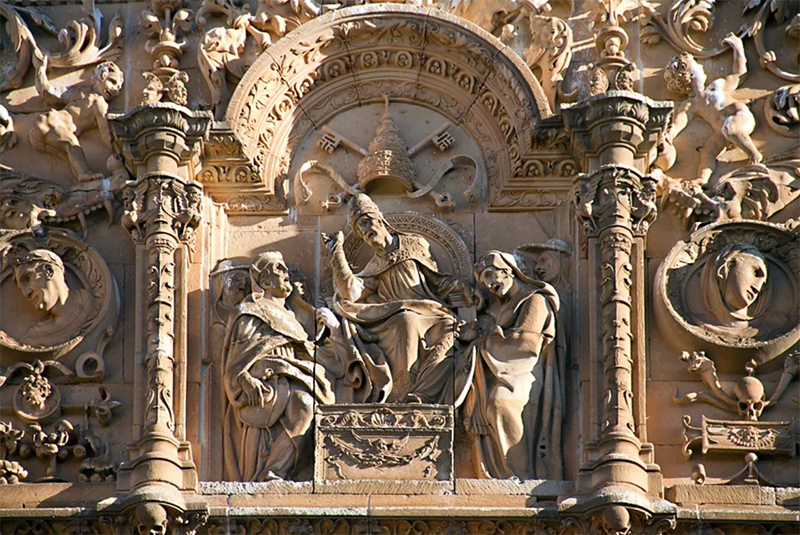
It goes without saying that each bas-relief technique has its own era and style, so when planning to make this image part of your design, you need to understand how it will fit into the interior.
If we talk about the design styles of a modern interior, then the bas-relief will look good in classic versions: baroque, gothic, empire, classicism. But this does not mean that it will not fit something modern, for example modern. You just need to choose the right motive and design.
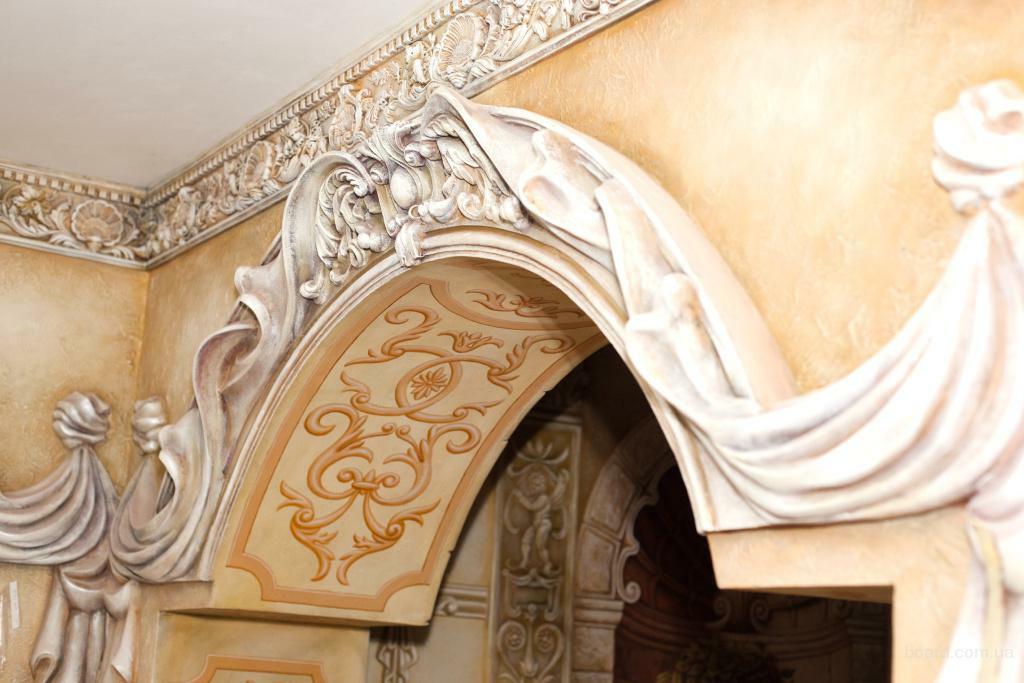
Classics suggests an abundance of gilding in the design of the bas-relief, baroque - elegant and numerous curls, art nouveau - fabulous motifs. For modern interiors, the bas-relief can depict stylized plants or geometric shapes.
It is not so easy to cope with the task of creating a bas-relief on the wall with your own hands. It will take a lot of preliminary work, sketch development and painstaking work. But all this is real, and it makes sense to try.
Where to use a bas-relief in the interior
The bas-relief in the interior can perform various functions, in addition to decoration. In addition to creating a bright and impressive accent, stucco can also play a practical role.
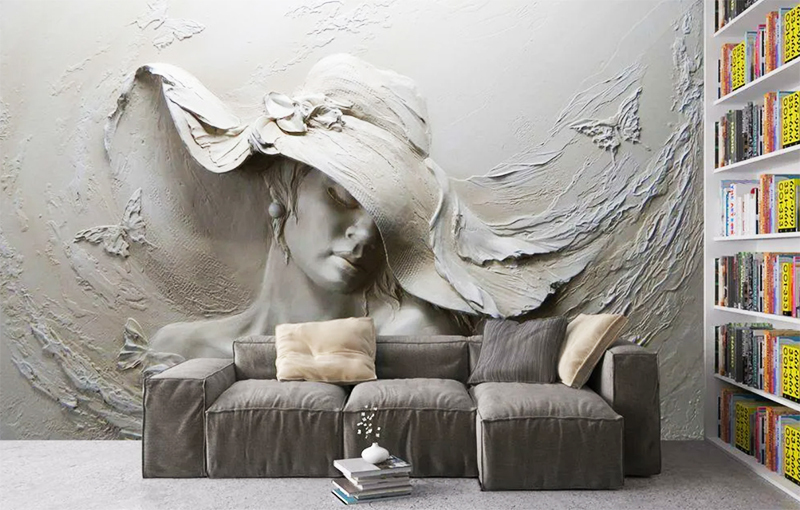
With the help of a bas-relief, you can hide communications. If you use traditional boxes or cable channels for this, it will turn out not very beautiful. But the original solution, relief, will help to completely divert attention from communications.
With the help of a bas-relief, you can visually correct the space. Volumetric images give perspective, break the boundaries of the walls, so that they can be used to make a small room more spacious. On the contrary, large details on gypsum stucco will visually bring the wall closer in a room that is too large and uncomfortable.
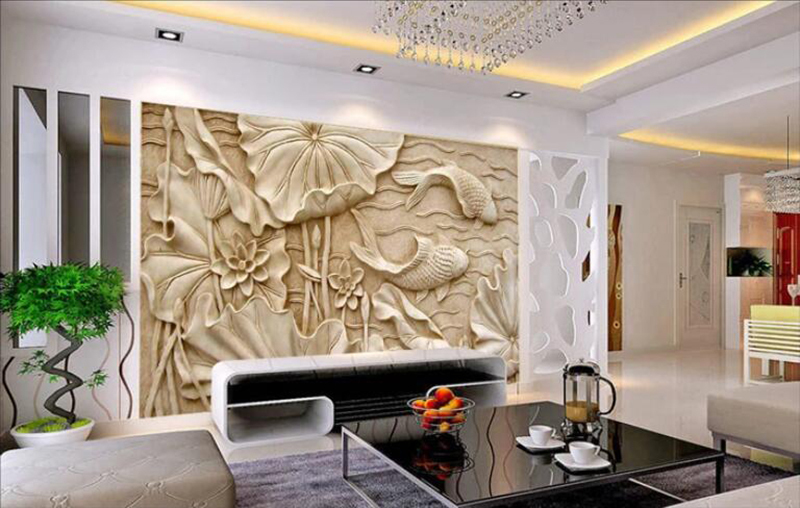
A great idea is to emphasize some detail in the interior with the help of a convex pattern. If you have a fireplace in your house, using a bas-relief, you can highlight it in the rest of the environment. In the same way, you can emphasize the head of the bed or the wall behind the sofa. If you add thoughtful lighting to the image, the bas-relief will become the most remarkable object in the interior.
Materials and tools for creating a convex image
If it was enough for an ancient man to use only his fingers to create a bas-relief, you will have a complete set of convenient tools, like a sculptor. And they don't have to be professional. Henchmen will do just fine.
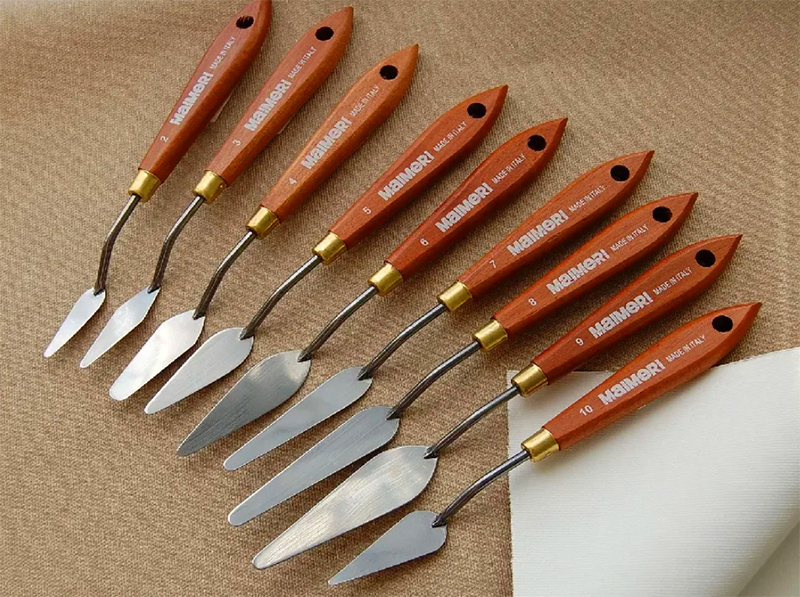
In addition, you will need a small rubber ball to knead the putty mixture. It would be nice to make an ordinary confectionery syringe from improvised materials. Even curly nozzles can be very useful.
To paint the bas-relief, you will need brushes and paints, to grind the details - fine sandpaper. And of course, you will need a mixture that will turn into a bas-relief after drying. For a novice master, it is necessary that the mixture does not freeze instantly.
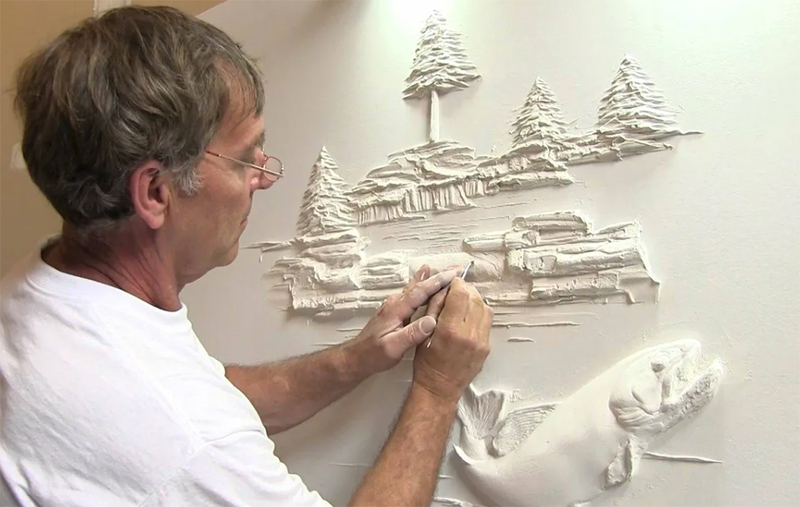
The most popular motifs for bas-reliefs
If you do not yet have a clear idea of what a bas-relief should be in your home, consider the most popular motifs on the basis of which you can make an original image. Decide on a place for plaster molding (in the corner of the wall, in the center, above or below) and the size of the image, watch the master classes that will become a guide to get started.
The most popular pattern for bas-relief is the landscape. Convex images with natural motifs fit perfectly into classic interiors.
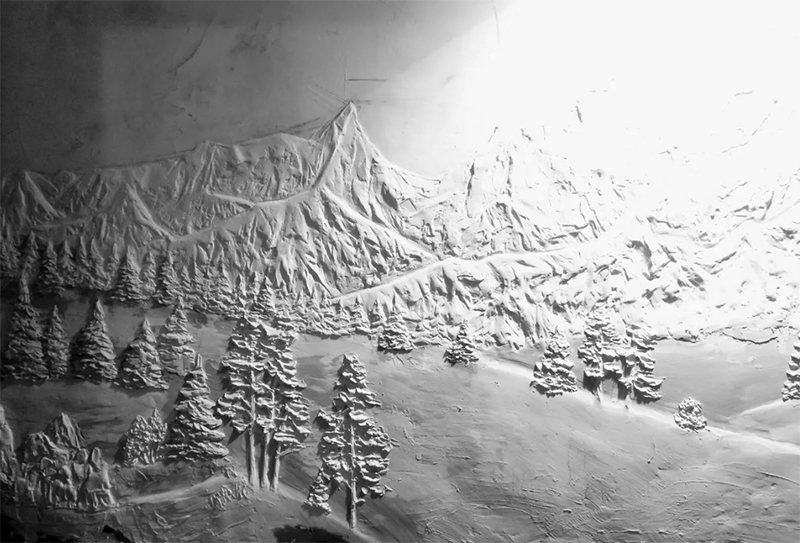
It will be more difficult to make a sculptural forest, but with the help of master classes it is quite possible. Such images will look great in the living room. And the seabed and its inhabitants are a great option for the bathroom. Novice masters depict a bas-relief in the form of a tree on the wall.

Branches are made very simply, and numerous small flowers can be “depicted” with a pastry syringe. Sakura is logically complemented by Japanese motifs, including images of birds or dragons. Such universal motifs will organically look in the living room, and in the bedroom, and even in the kitchen.
Among the fashion ideas for bas-reliefs, you will find large images of flowers. It can be roses or lilies, orchids or even wildflowers. But, oddly enough, noble roses are much easier to make than wild flowers - keep this in mind.

For interiors in the Rococo or Baroque style, it is better for a novice master to choose a vine.

The most difficult choice of all possible is the image of animals and birds. Birds require careful study of feathers, animals - wool. This is incredibly painstaking work, which takes a lot of time and effort.
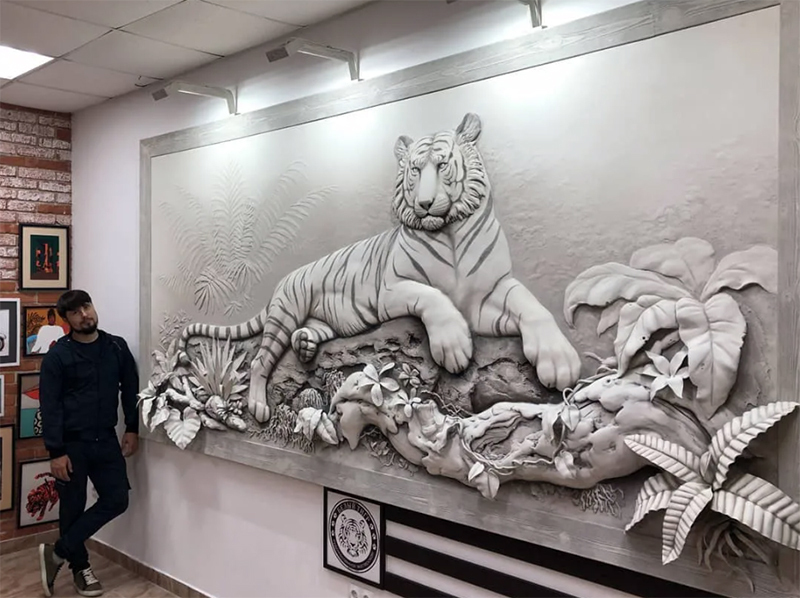
The only exception is dragons - it will be a little easier here, but again, a very high-quality sketch and a lot of work will be required.
How to make a bas-relief on the wall for a novice master: the main steps
If you have no experience in creating sculptural images, you need to start with something simple and not immediately on the wall, but on trial surfaces. Try how fast the mixture hardens, how it is more convenient to form it, work with tools to understand their purpose.
Choose one of three bas-relief techniques. This can be plastering, when plaster is applied over the form. The technique is quite simple, because the molds are made of wood or foam, attached to the wall with glue or self-tapping screws, and simply covered with a plaster mixture. With no experience, you can easily cope with such a task. The only problem is finding suitable modules and how much such parts can cost.
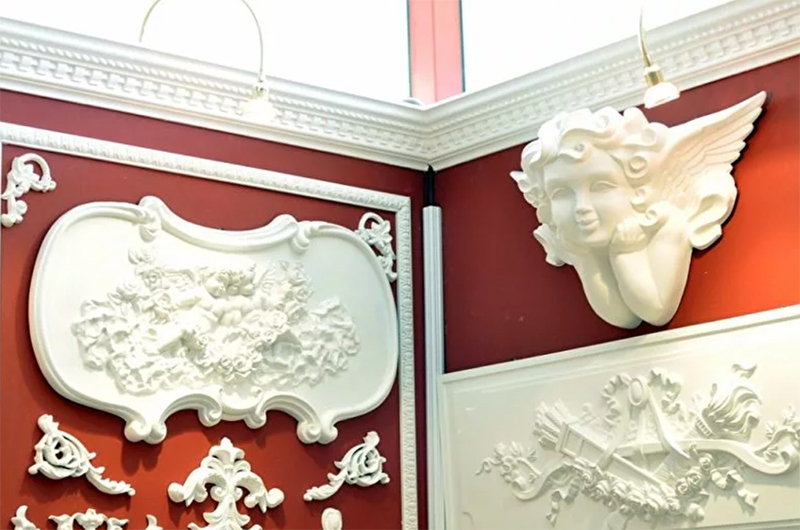
Another technique is casting. To work in it, the parts are first cast in special molds, and after solidification they are glued to the wall.

For the manufacture of molds, a model and silicone are used.
And finally, the most painstaking and complex technique is modeling. In this case, they work directly on the wall, managing to bring the image to perfection before the solution hardens. You will need different spatulas and shovels, an art knife.
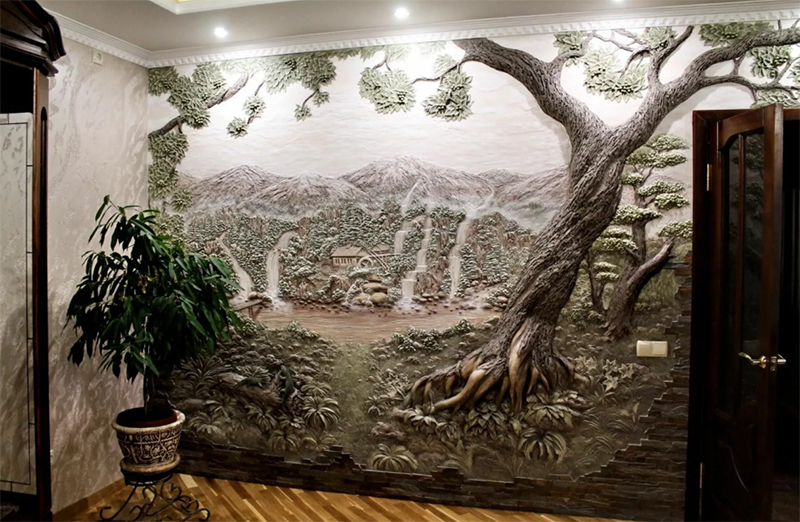
This work will require detailed sketches and artistic talent. Such works are always valuable.
Preparing to work on the bas-relief
Whichever technology you choose for the convex pattern, the base is prepared in the same way. First, it needs to be leveled, cleaned of all remnants of the past coating, which can peel off along with the bas-relief. Ruthlessly remove old wallpaper, plaster, whitewash or paint. Pay attention to dirt on the wall surface. You can not leave rust spots, they will appear on the plaster molding over time. It is also worth carefully removing traces of oil or mold foci. If there are any fasteners left on the wall, they should also be removed, and the holes should be plastered. It is necessary to repair other defects in the wall - dents or cracks.
If the wall is uneven, it should be leveled. And with the help of a bas-relief, you will hide the flaws, but it will be much more difficult for you to work on an uneven wall.
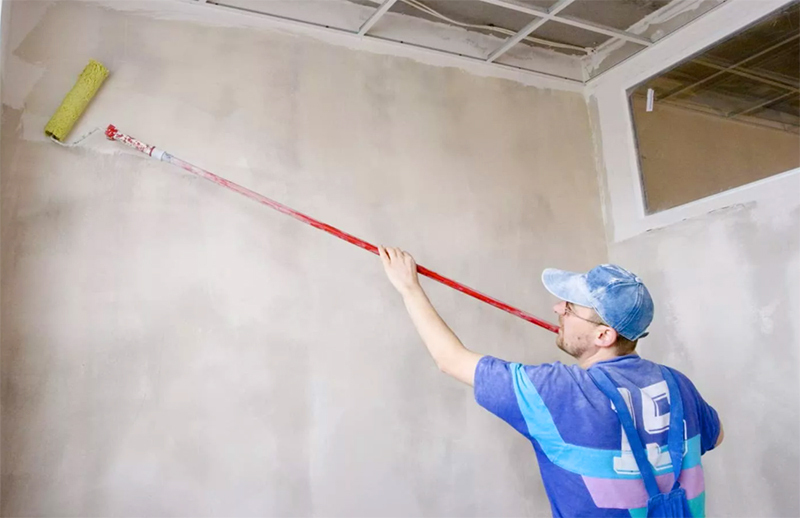
How to work with a sketch
You can choose a suitable sketch on the Internet if your artistic skills are “lame”. Choose a floral motif or landscape. The theme of the bas-relief should be in harmony with the purpose of the room.
Print the image on a regular printer and transfer to graph paper. Then draw the coordinates on the wall and transfer the drawing in accordance with the lines on the graph paper.
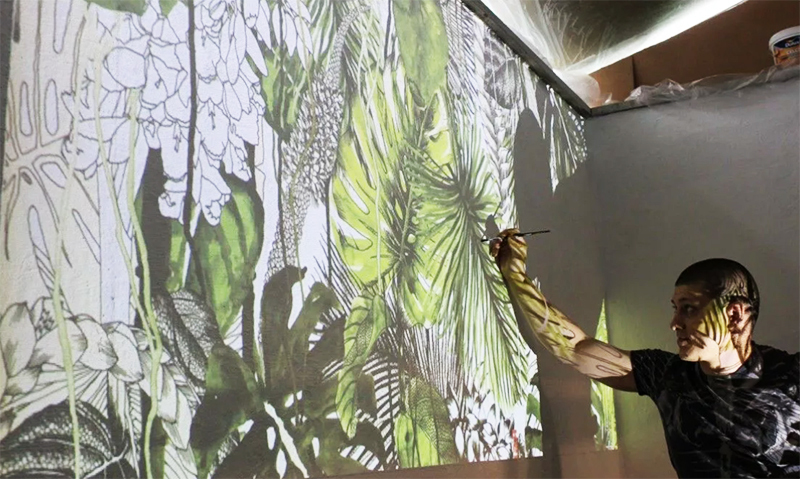
If the drawing is large, it can be transferred in parts, printing each fragment separately. Make control holes on the printout at different points, attach the sheet to the wall and transfer the points with a sponge with contrasting paint.
Frame for three-dimensional drawing
For bas-reliefs with significant bulges, an additional frame is created that performs the task of reinforcement. The easiest way to make such a frame is from wire - copper or aluminum. You can use cord instead of wire. If necessary, the cord is untwisted and the number of threads is reduced. For reinforcement, the cord is soaked in a creamy mixture of gypsum and water.
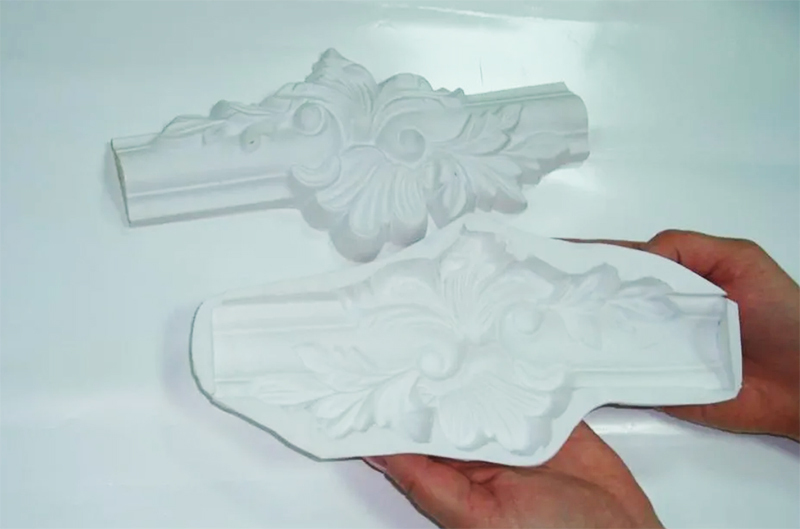
The wire reinforcement is also covered with a layer of gypsum talker, but in order for it to fit well on the part, the wire is wrapped with an ordinary medical bandage.
How to form a relief on the wall
Volumetric drawing is applied in parts. First, the main layer, in which the thickening of particularly outstanding details is created immediately, but in several stages. For good adhesion, the first layer of the bas-relief is not sanded.
Some craftsmen use small self-tapping screws screwed into the wall as "beacons". All joints of cast parts are filled with plaster mixture.

After the large details are completed, you can move on to the small details. The technology is the same, only the tool will be thinner, and grinding will be more accurate.
Remember that the solution should not be kneaded immediately for the entire amount of work. You need to cook it in small portions in order to have time to form a pattern, until the composition has frozen.
To make the drawing clearer, you can use incisors. They easily cope with plaster products, and with their help you can reproduce very thin relief lines.
Emery works only after the plaster has completely dried. For the base, paper with a medium grain is suitable, for grinding fine details - fine-grained.
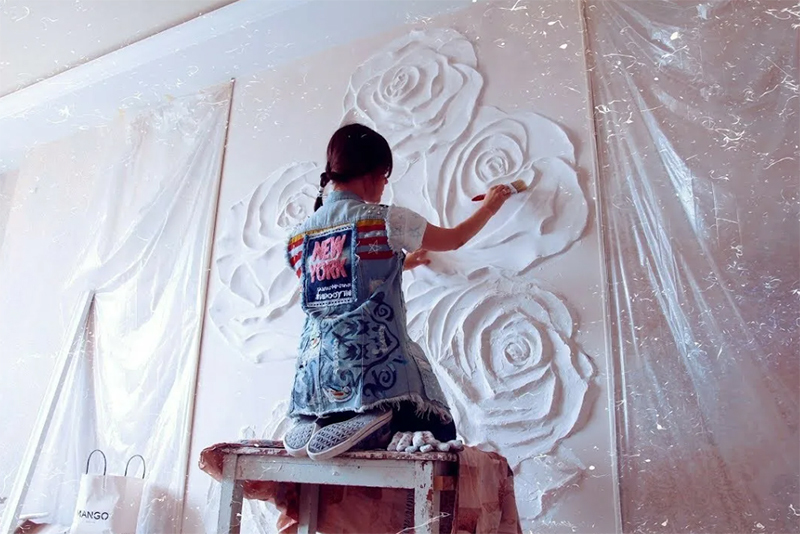
Volumetric paintings become even more expressive if you use paint and the play of light and shadow. The stucco must dry completely, and the primer on it must also dry for at least a day.
Gypsum stucco is painted with water-soluble acrylic paints. To obtain soft transitions, a damp sponge is used as a tool for applying paint.

Bas-relief illumination: basic rules
If you properly organize the backlight, the bas-relief will look especially expressive. But you should think about backlighting at the stage of designing an image. You need to think about where and how you will place the lamps, how you will make directional lighting, where you will connect it.
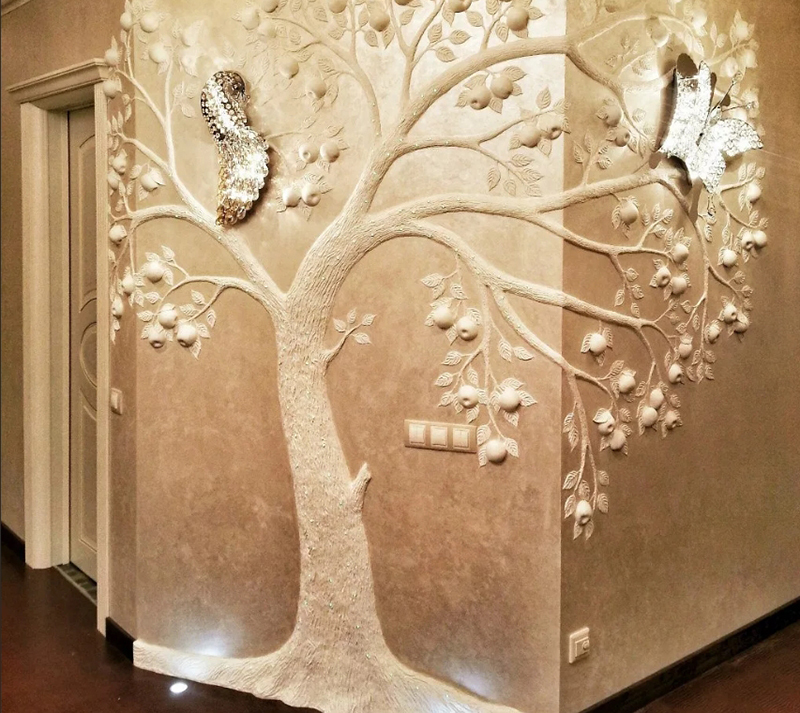
The process of creating a bas-relief is described in detail in this video tutorial:
As you can see, creating such a picture on the wall is easy. The main thing is to have desire and inspiration. Would you like to decorate the wall in your house with a bas-relief? What stories do you like, what else remains incomprehensible to you with this technology? Share your opinion in the comments!
Hello, my name is Andrey. I am buying information sites. There is…
and if the top layer of foam is not broken, then the lacquer surface greatly reduces the hygroscopic ...
strange reasoning regarding sealing. If the log is doused with sealant, foam ...
In the 80s he worked in one NPO, then hammer enamel was sintered. It turned out great,...
While in the summer I lived in the country a lot of different situations I saw and no one fines anyone. Uch…
You won't find a normal apartment for such a sum in Moscow. Even for a country house that …
Thank you. Briefly and clearly...
Karting. I want to help children! &nbs …
Now there is a very interesting and effective option for heating - plasterboard pas …
Everything is chic, but the emphasis is always on the ratchet. And for me, for example, it is technologically not p ...
yes indeed. you won’t call them later for the whole year no one appeared, they began to hear ...
And why sheathe the house initially with vapor barrier? What is its meaning? To create a conden…



